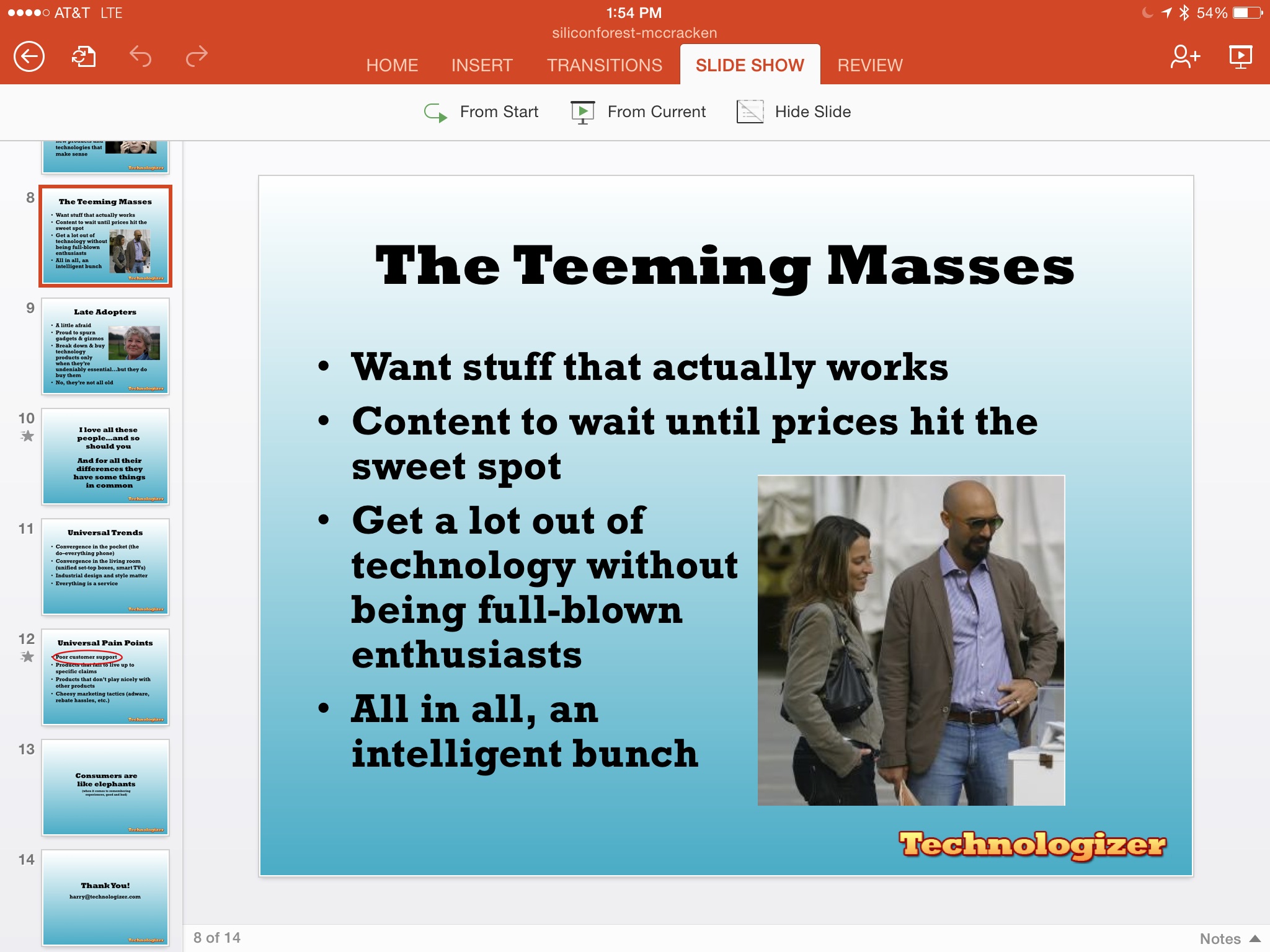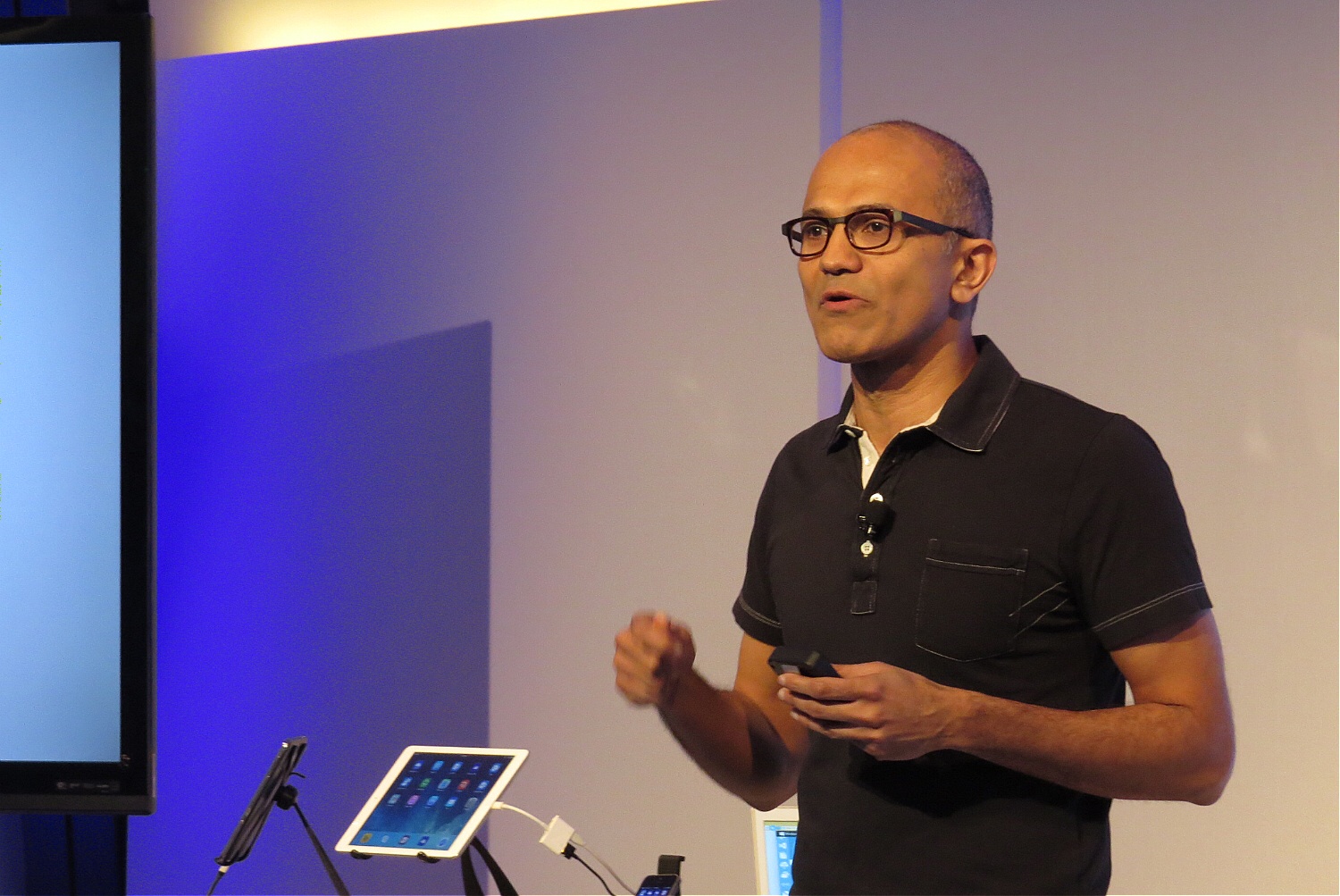
First, a disclaimer: You can’t rush your way through reviewing an office suite. Exploring a new word processor, spreadsheet or presentation app is plenty of work on its own; judging all three is something you can’t do in a few hours.
With that out of the way, I’m here to talk about Office for the iPad, which Microsoft unveiled on Thursday after what may have been the longest period of anticipation in iPad-app history. I’ve spent the last couple of days with the new versions of Word, Excel and PowerPoint, and it’s mostly been a good experience, with some quirks.
The biggest problem I’ve had with Office on the iPad so far came before I actually did anything with the apps. After I’d downloaded them and fired up Word for the first time, I got an explanation that in order to do anything beyond viewing documents, I’d need to buy a year’s Office 365 subscription for $100. (I had a subscription, which had lapsed.) I paid up though iTunes on the tablet, and found that I still couldn’t sign in. I tried again, and iTunes told me I’d subscribed a second time, for an additional $100.
Eventually, I got in by subscribing yet again, this time in a browser on the iPad. Whether the glitch is Microsoft’s fault or Apple’s, I’m not sure, and I hope it’s not too hard getting $200 in charges on my Amex card reversed. (I haven’t seen any reports of anybody else running into the same problem.)
Once I was up and running, I found a lot in all three new apps that’s impressive. They look very much like Office as it exists elsewhere, but Microsoft didn’t just cram the existing interface onto the iPad’s screen. The Ribbon toolbar, for instance, is skinny and streamlined, freeing up more of the iPad’s limited on-screen real estate for content. The level of polish and performance is high: Actions such as dragging, dropping and resizing objects feel as if they were designed to work well with the touchscreen, which isn’t always true of the more conventional version of Office that comes with Microsoft’s Surface 2 tablet.
Just as you’d assume, the three apps save everything to your Microsoft OneDrive online storage by default. Other current versions of Office do that, too, so you don’t need to go through any fancy logistics to get to your documents to and from any device that runs Office. (Alternatively, you can choose to save them only on your iPad, although I’m not sure why you’d want to do that.)
Given how bare-bones Microsoft’s existing versions of Office for the iPhone and Android are, I was prepared for the iPad one to be similarly minimalist. Instead, it has plenty of features beyond the basics. Word is especially rich, with support for multiple columns and the ability for several people to collaborate on a document, complete with redlined revisions and threaded comments.
At the same time, there are some omissions — most notably the ability to print your documents, a weird no-show given how much advanced stuff all three apps sport. Nor do the apps support iOS’s “Open in” feature, which would be a simple way to get documents into a third-party utility such as Printer Pro for printing. (The OneDrive app does let you open up your Office docs in a printing program.)
Other significant missing features I’ve stumbled across so far include the ability to create charts in Word and animate objects in PowerPoint. While the apps don’t support these sorts of options, they do bring in documents created in other versions of Office that include them; you just can’t add them from scratch or modify instances that are already there.
Overall, the philosophy behind these apps seems to be that when they support a feature, they support it either well, or not at all. Julia White, the Microsoft product manager who did the demos at Thursday’s press event, told me afterwards that there will be updates with more features; if Microsoft is serious about supporting the iPad, it’ll fill in the more obvious holes quickly.
Judging from the various documents I’ve tried out so far, the iPad apps already do an excellent job of handling documents created in other versions of Office – fancy formatting, oddball fonts and all. With Apple’s iWorks apps, I usually get an error message about missing fonts when I open even the most rudimentary of Word and Excel files. In Microsoft’s apps, they look like they did when I created them, and even features such as frozen panes in Excel spreadsheets work.
Just about everything that’s good about Office for the iPad — the familiarity of its interface, the support for collaborative editing, the speed with which you can get files in and out of Office on various devices, with their formatting intact – has one overarching thing in common: It’s all about Office for the iPad being part of the greater Office ecosystem, not an island unto itself. The more editions of Office you use, and the more people you work with who also use Office, the more you’ll like the iPad version.
Which means that Microsoft’s decision to roll full-fledged access to Office for the iPad into the price of an Office 365 subscription is logical enough. If you subscribe through your iTunes account on the iPad, you’ll pay $100 a year for the right to run the suite on up to five Windows PCs or Macs and five tablets. On its own website, Microsoft also offers a $70 plan that gives you the right to use Office on one computer and one tablet. Paying that kind of money solely to get access to Office on the iPad would be excessive; spending it for Office on all the devices in your household is not.

If you’re just not that into Office, there’s an excellent alternative: Apple’s iWork apps, Pages, Numbers and Keynote. Apple provides them as free downloads for all iPad owners, and they’re solid apps in their own right. Just be prepared for formatting quirks — usually minor ones involving fonts — if you shuffle documents between them and Office.
Microsoft’s CEO, Satya Nadella, has had his new gig for less than two months, so he probably can’t claim credit for Office finally showing up on the iPad. But with any luck, its arrival is an omen of things to come. In the Steve Ballmer era, the company was achingly slow to support new platforms that competed with its own, and its hesitance wasn’t good for anybody, including Microsoft. Here’s hoping that the Nadella era is one in which Office is available — and good — everywhere that people want to be productive.
More Must-Reads From TIME
- The 100 Most Influential People of 2024
- The Revolution of Yulia Navalnaya
- 6 Compliments That Land Every Time
- Stop Looking for Your Forever Home
- If You're Dating Right Now , You're Brave: Column
- The AI That Could Heal a Divided Internet
- Fallout Is a Brilliant Model for the Future of Video Game Adaptations
- Want Weekly Recs on What to Watch, Read, and More? Sign Up for Worth Your Time
Contact us at letters@time.com